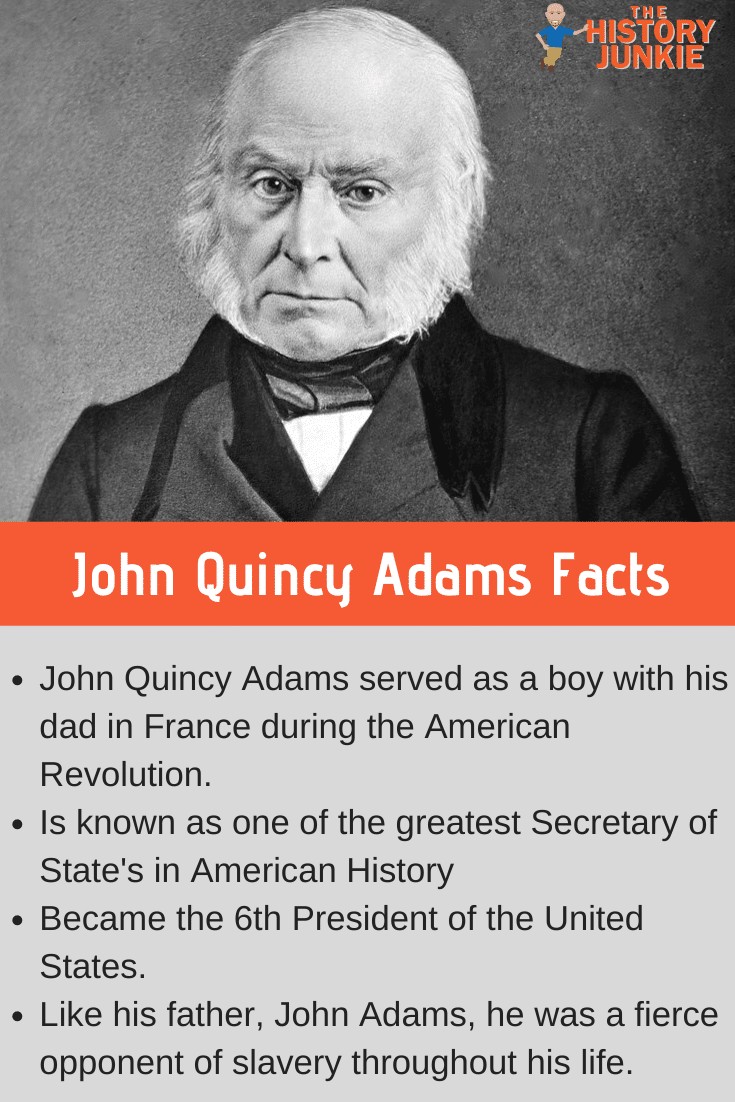John Quincy Adams was elected President through his credentials and not by the American people. Andrew Jackson did not secure the majority needed, and the election was settled by Congress, who elected John Quincy Adams.

John Quincy Adams will be remembered as one of the greatest diplomats in American history, but he will not be remembered for his presidency.
First Term
March 5, 1825: John Quincy Adams repeats the mistake of his father, John Adams, and appoints political opponents to fill Federal posts. This would destroy his ability to build a strong foundation.
December 6, 1825: Adams gives an ambitious program that includes the construction of roads and canals, the founding of a national university, western expansion, a national astronomical observatory, the standardization of weights and measures, and a variety of new laws to promote agriculture, manufacturing, commerce, arts, literature, and science. Each of his ideas came under attack from his opposition due to supporters of Andrew Jackson.
December 26, 1825: The Americans are invited to the Panama Congress, which Adams accepts, but Congress rejects, citing that it is getting involved in foreign affairs.
January 10, 1827: A bill to increase the Tariff on Wool is rejected by Congress.
July 30 -August 30, 1827: The Harrisburg Convention meets and suggests higher tariffs on wool, hemp, flax, iron, steel, and other goods.
May 19, 1828: John Quincy Adams is sabotaged by Andrew Jackson supporters. He had made a foolish decision by allowing Jackson supporters into his cabinet and could never get any traction. The Tariff of Abominations passes, which many supported, but it deprived Adams of a campaign issue.
December 3, 1828: Andrew Jackson easily defeats John Quincy Adams in the Presidential election.
